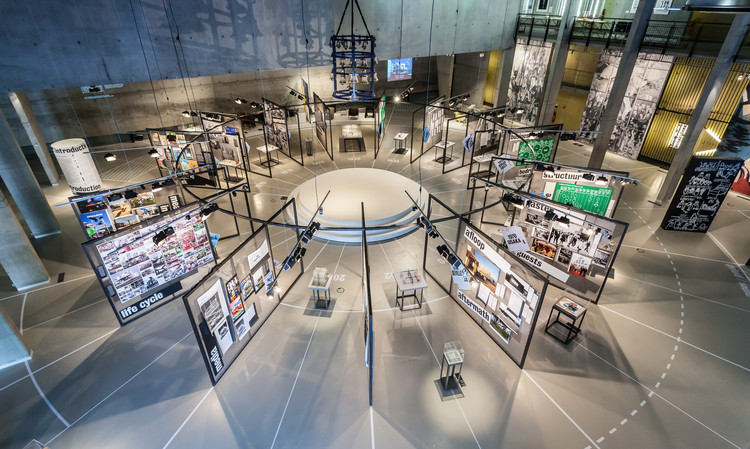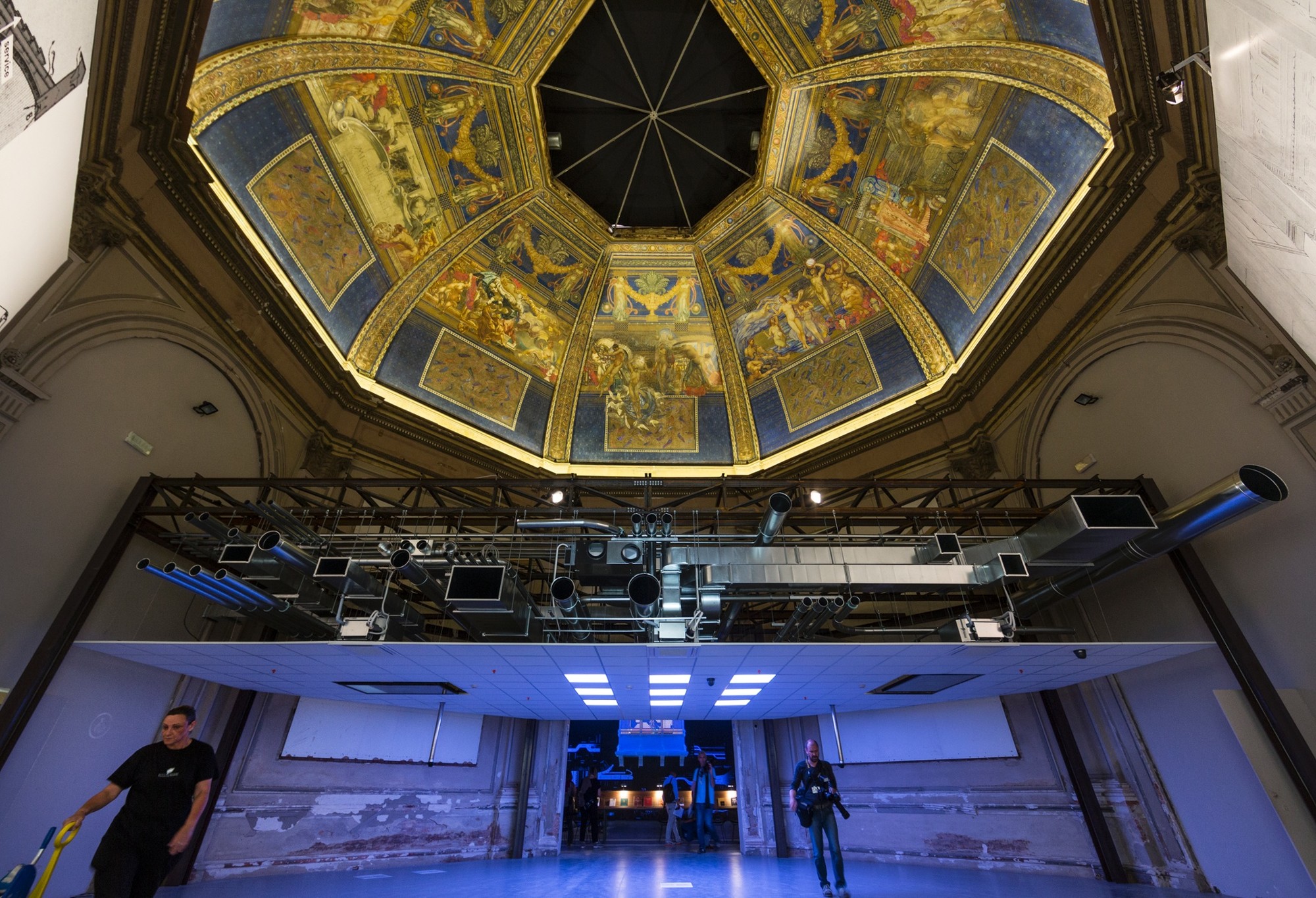
When it comes to the modern-day fashion show, the internet has fundamentally changed the way audiences interact with models and designers, say OMA/AMO, arguing: "The assemblage of recorded impressions and digital reactions inserts itself into the once autonomous narrative of the fashion show. The statement of the collective spreads. The mass of fragmented instant data is uploaded and critiqued by a multitude of voices."
With their latest fashion show design for Prada, which was used to showcase the designer's upcoming fall/winter menswear collection in Milan yesterday, the firm sought to enhance this sense of public judgement. "This consumption of images is like a public trial, a contemporary transposition of the Auto-da-fé," explains their press release, referring to the ceremonies of public penance which took place in the Portuguese and Spanish Inquisitions in the 15th-17th centuries.




























.jpg?1393939197)